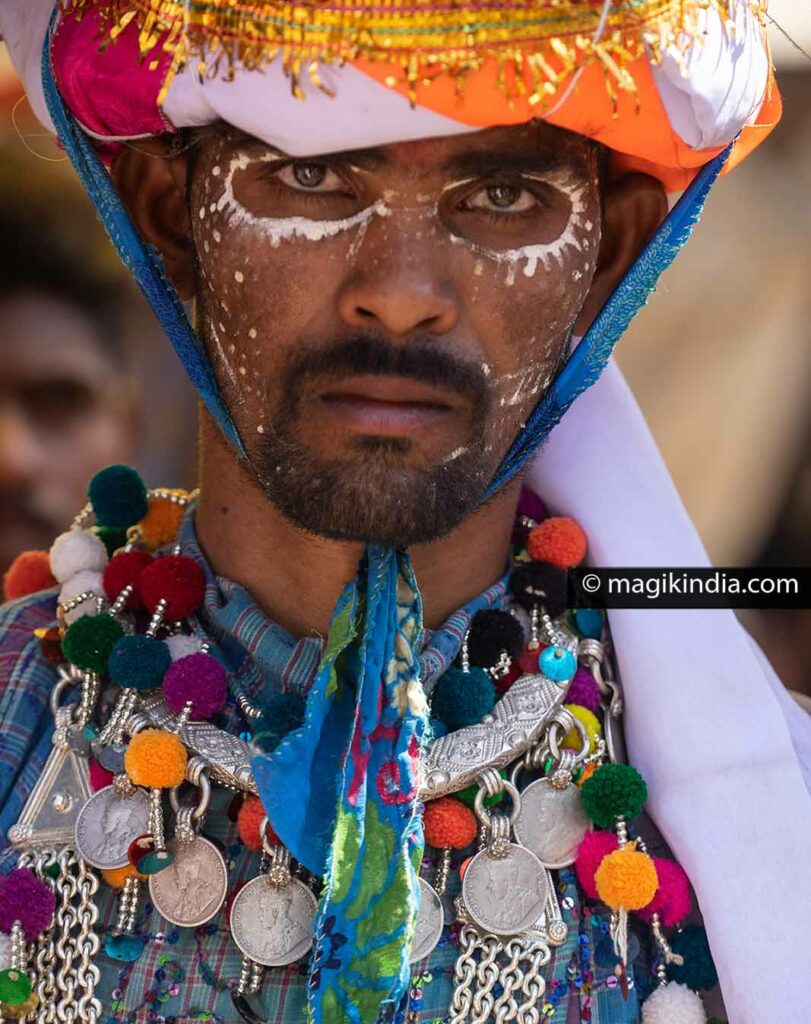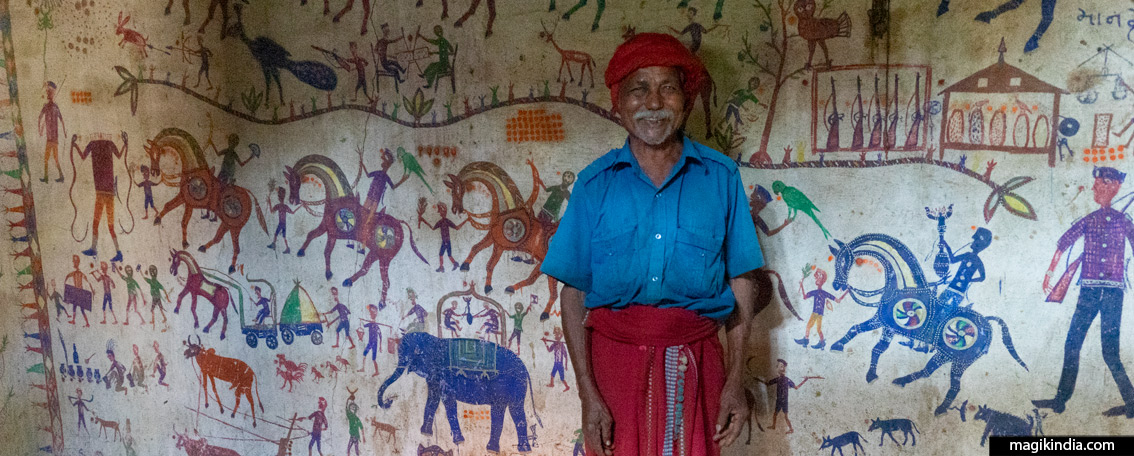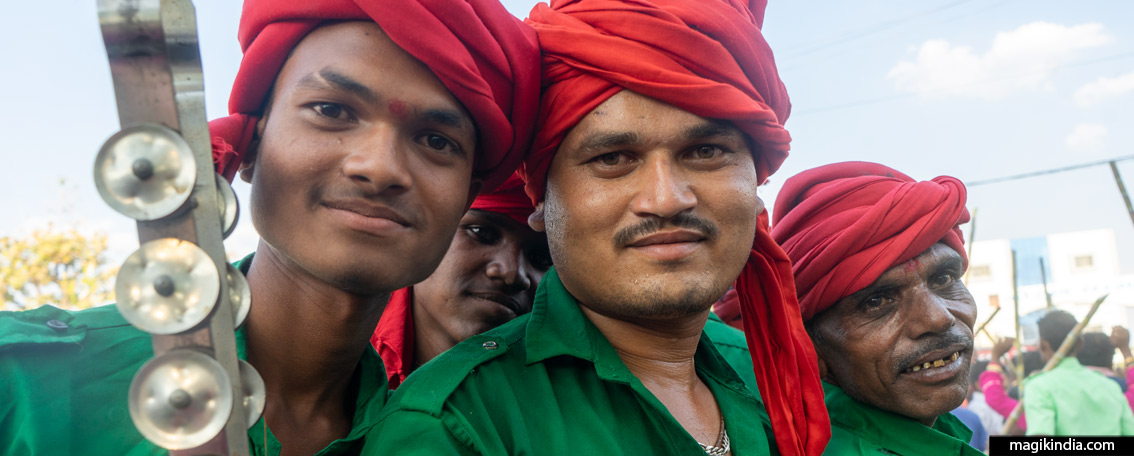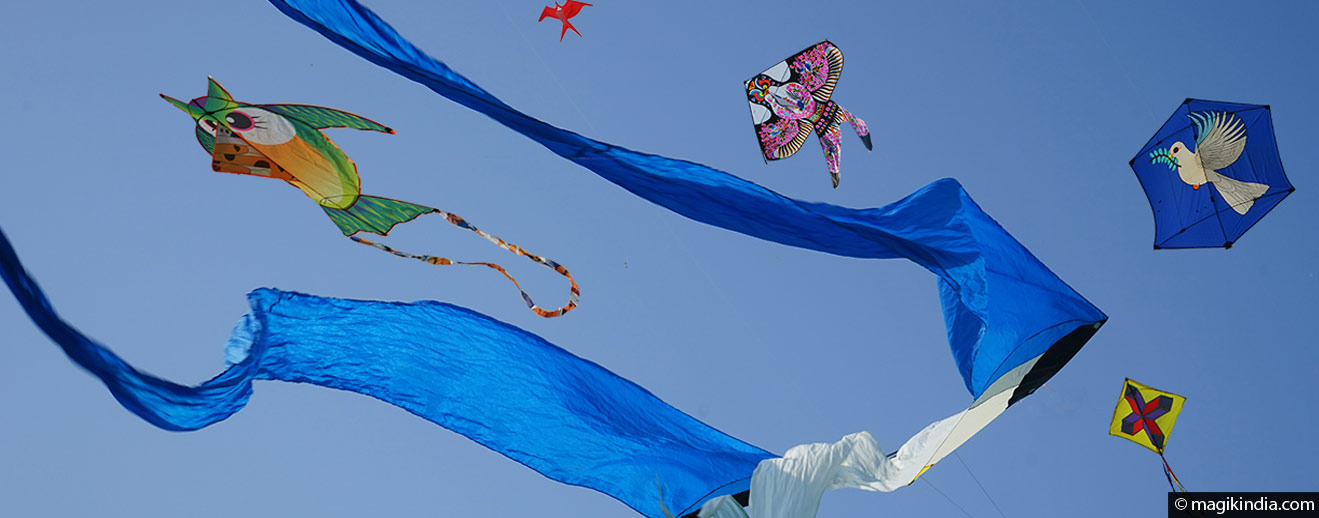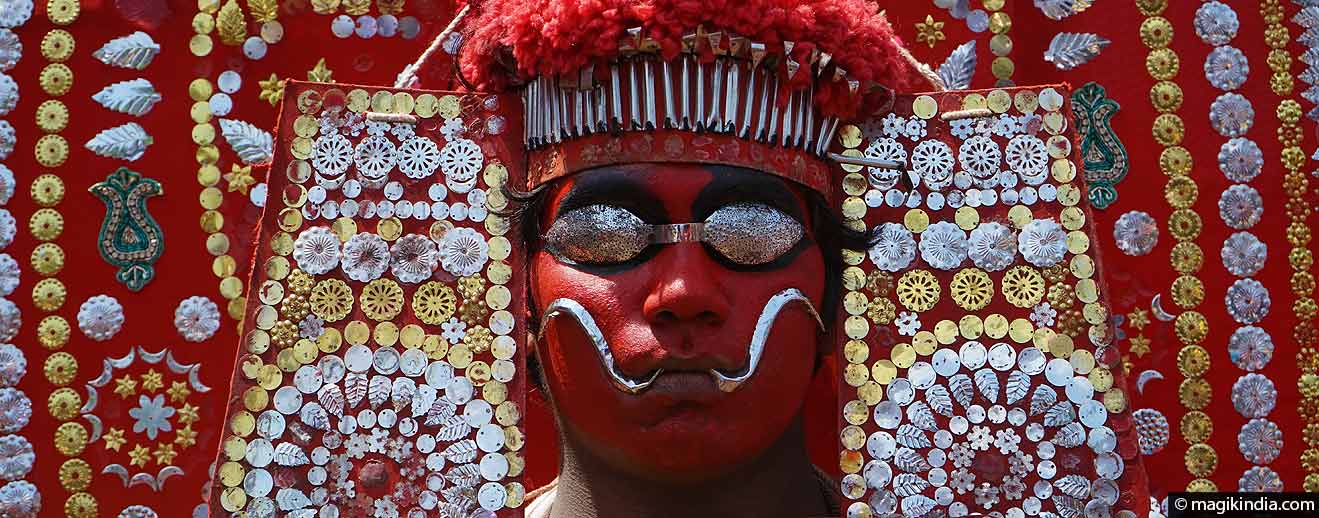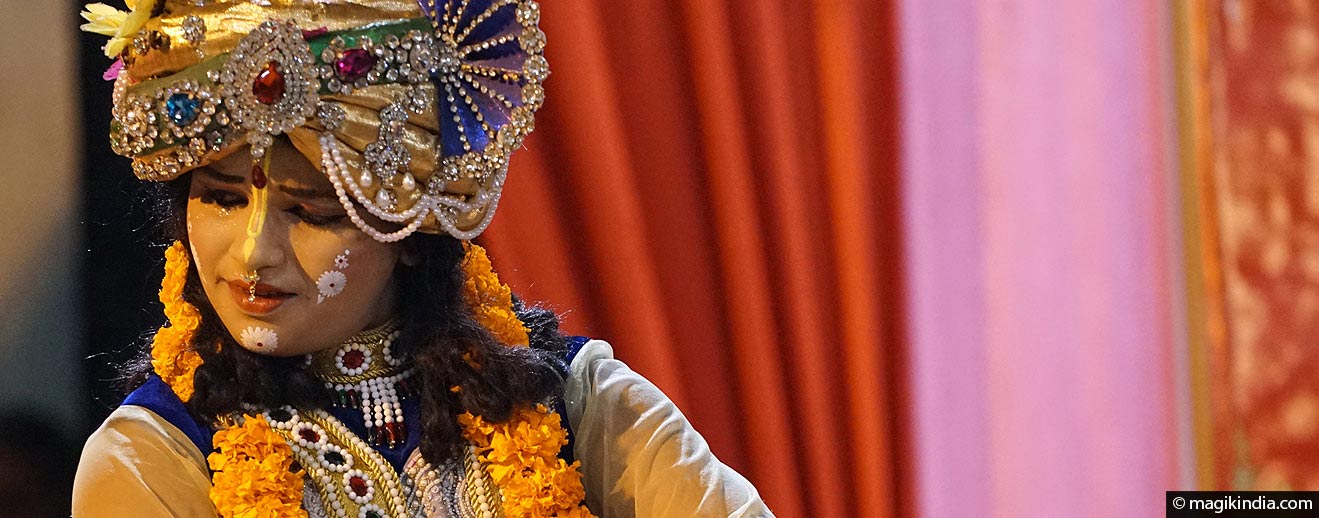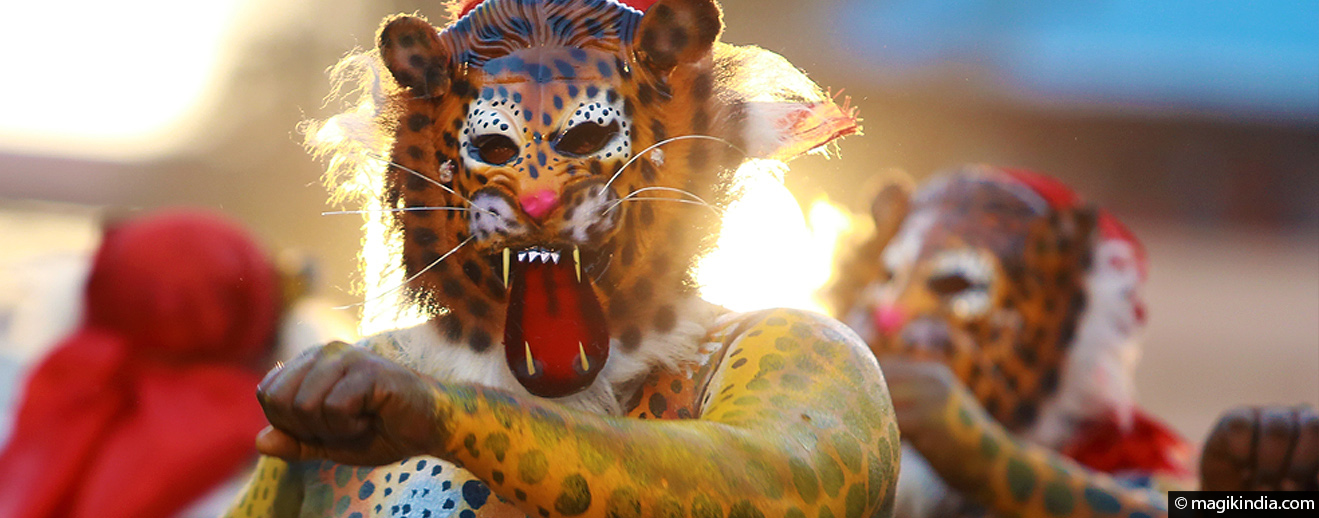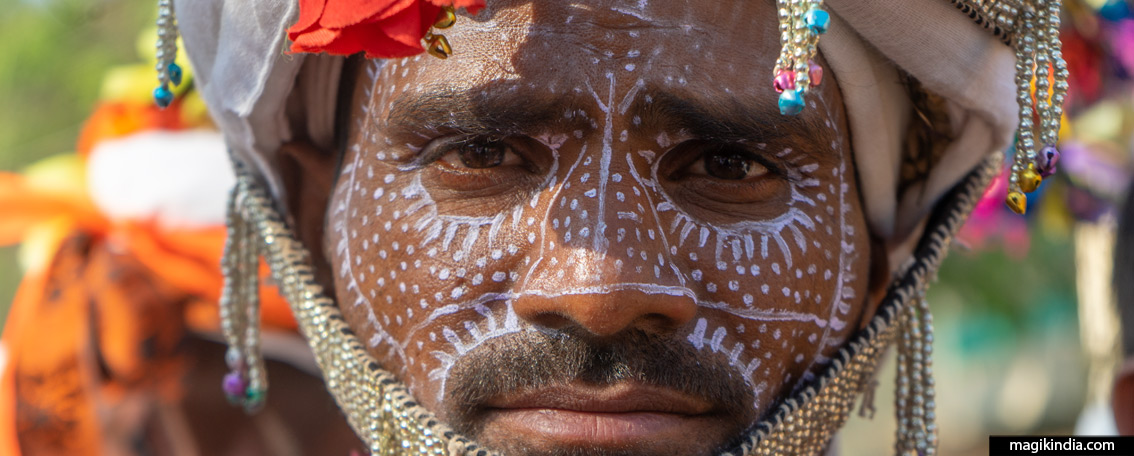
Kavant Fair, the harvest festival of the Rathwas
The Kavant fair or Kavant Gher Mela, which is held in the village of the same name, near Chhota Udepur (Gujarat), is the last part of the spring festivities of the Adivasi Rathwa community. It takes place on the third day after the Holi festival and brings together thousands of people who come to celebrate the end of the harvest or simply gather for a good time.
We arrive in the village of Kavant late morning, apparently too early this year, because there is no crowd in the streets. I end up wondering if there is a mistake about the date. I then remember that this festival has no fixed schedule, it’s a bit according to the mood of the participants.
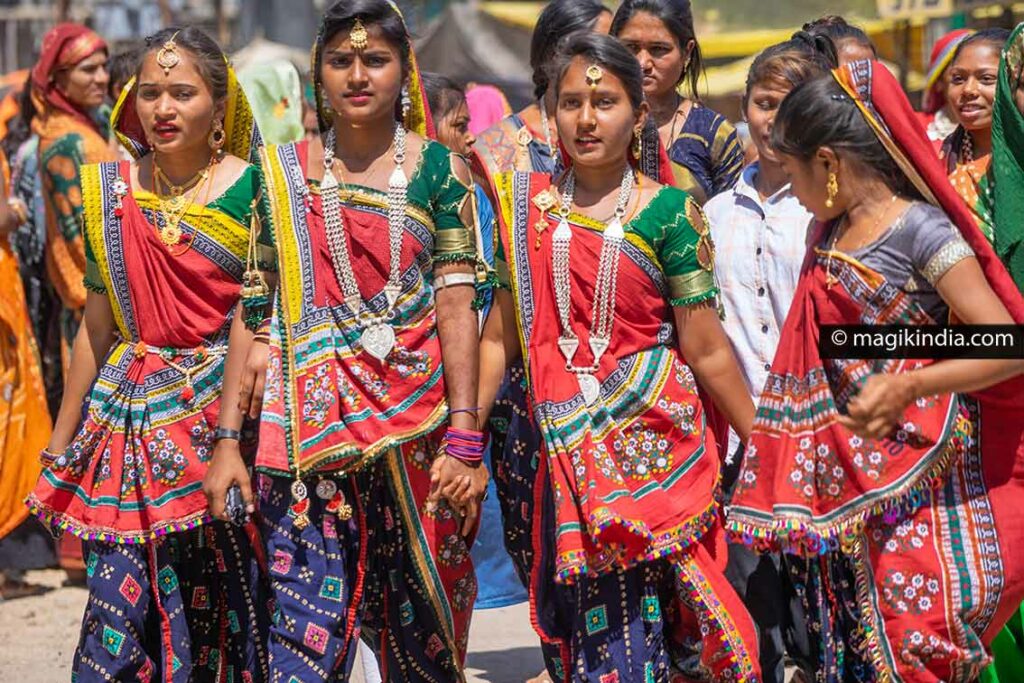
It is only in the middle of the afternoon that the city begins to come alive. Groups of women arrive dressed in their traditional costumes, often in identical colors in a spirit of unity. Salwar-dhoti (loose pants) and Odhani (long veil) for some and ghagras (long skirt) and veil in bhandani pattern for others. large solid silver necklaces complete the outfit. Stunning!
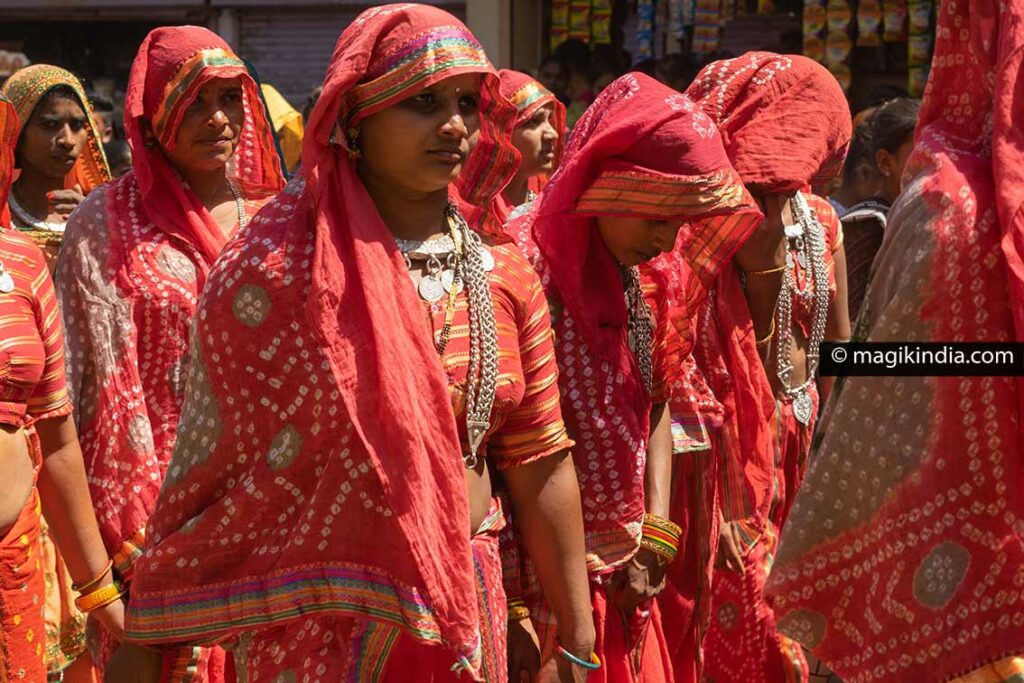

Suddenly, from a distance, I see a first troop of about ten members. I try somehow to make my way to reach them… Oh! They are the ghairiyas, the “peacock men” as I call them, emblems of the festival in a way.
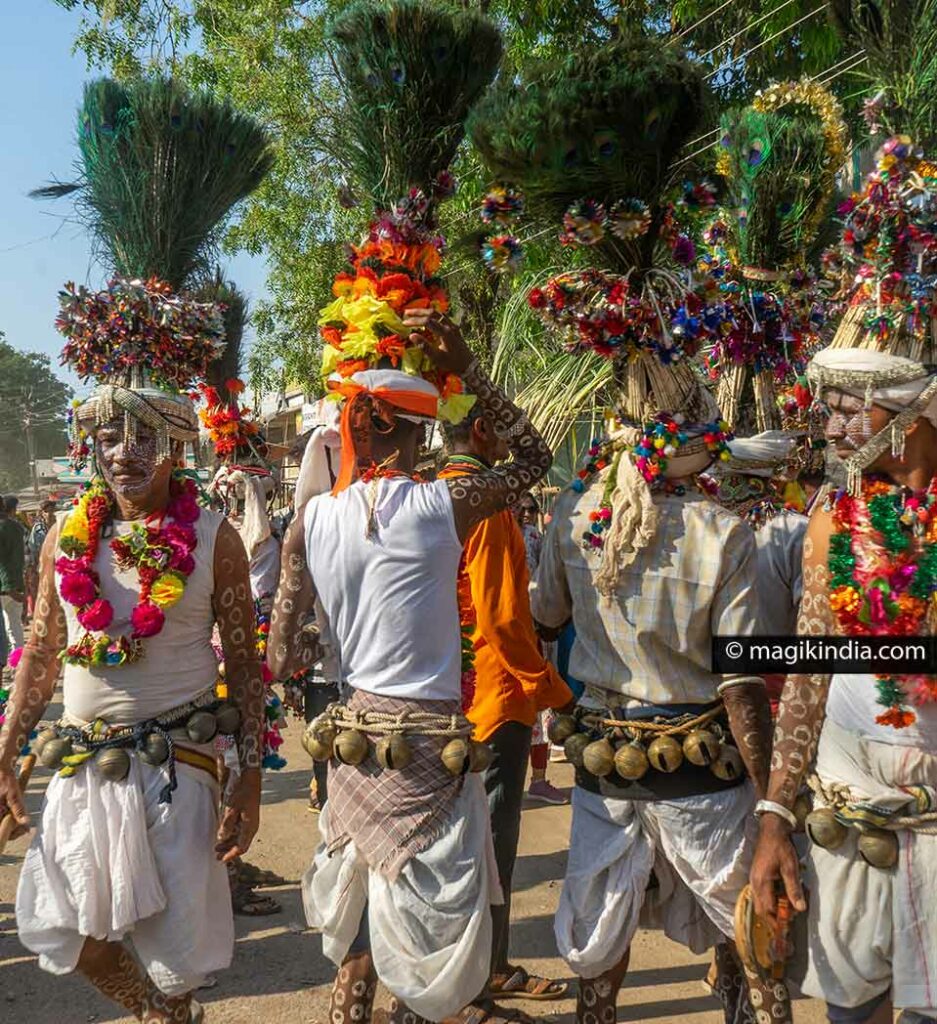
Their face is painted with white lines and dots, their waist wears a rope belt with large bells and their head is crowned with a tall conical hat studded with a bouquet of peacock feathers and multicoloured garlands… Absolutely irresistible!
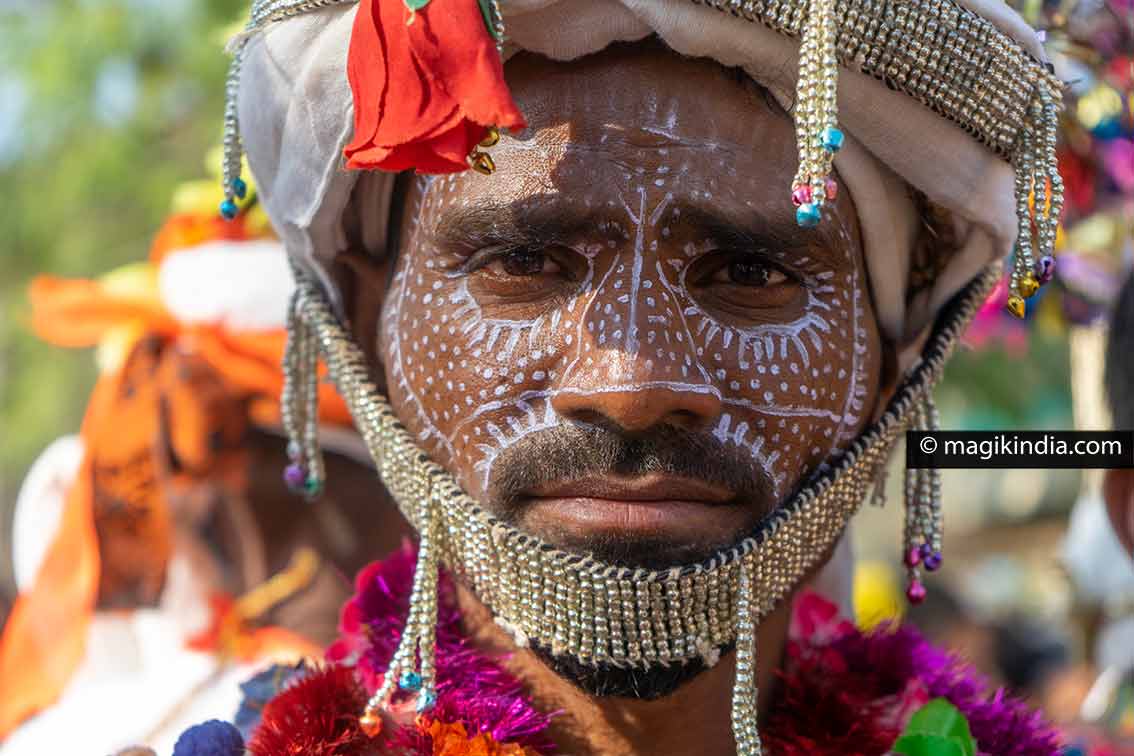
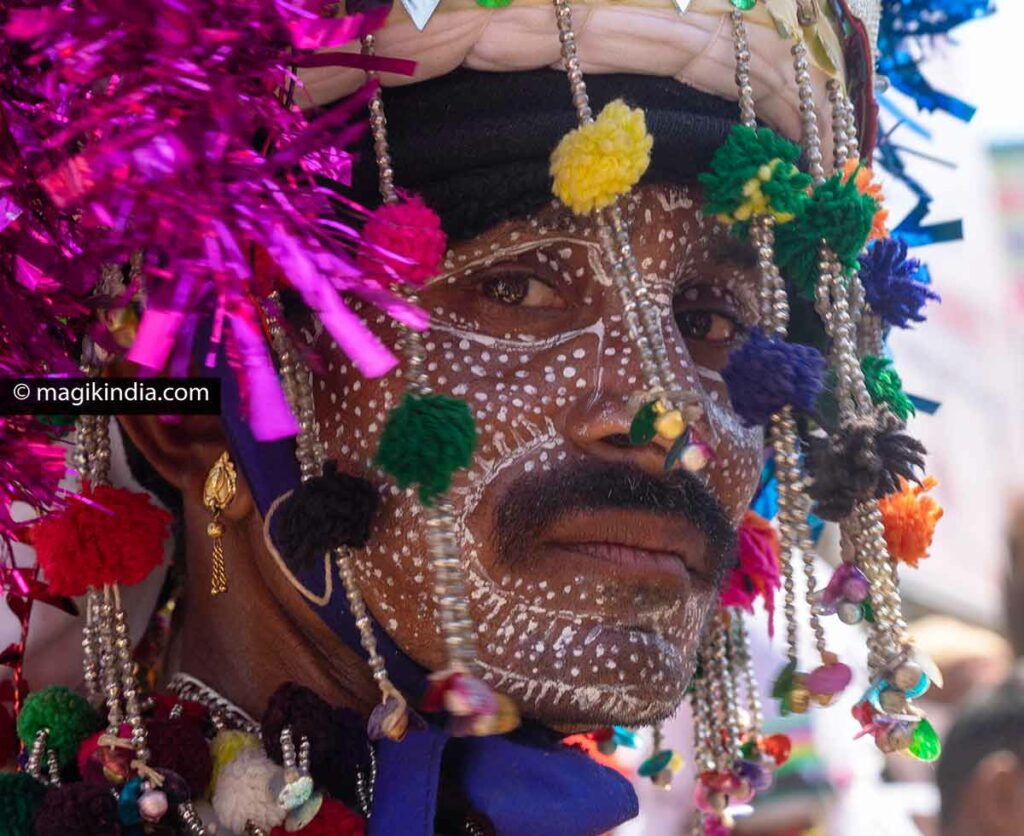
In addition to their unique look, these peacock-men dance in a very special way: every three beats, they sway their hips to make the bells on their belt jingle, thus breaking the metronomic rhythm of the percussion that accompanies them.
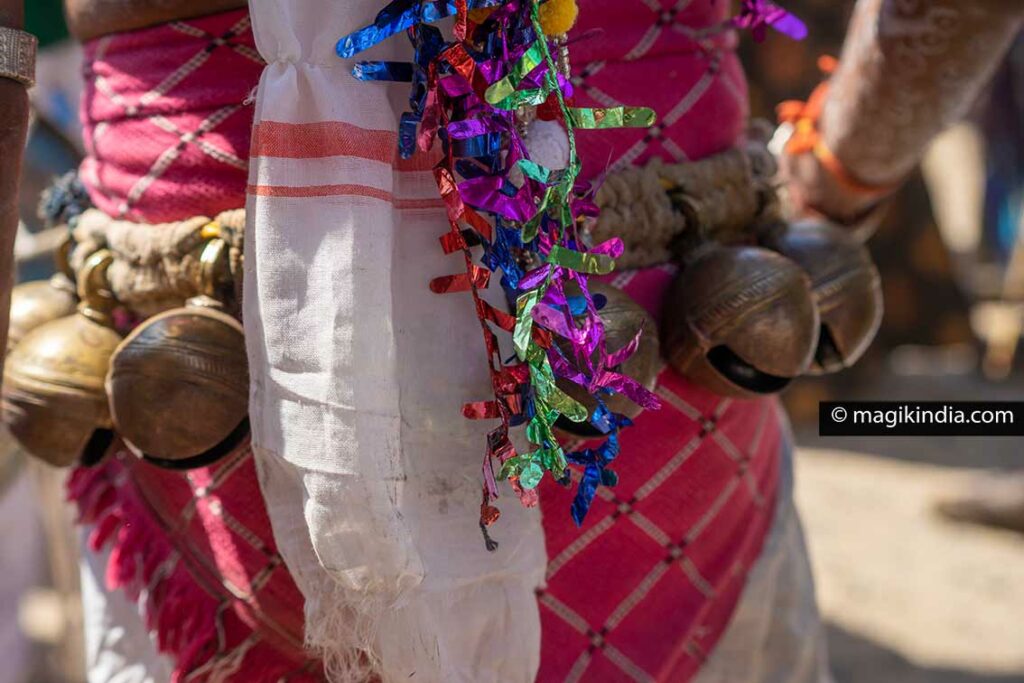
This troop is followed by many others until the streets of Kavant are crowded and we can no longer move.
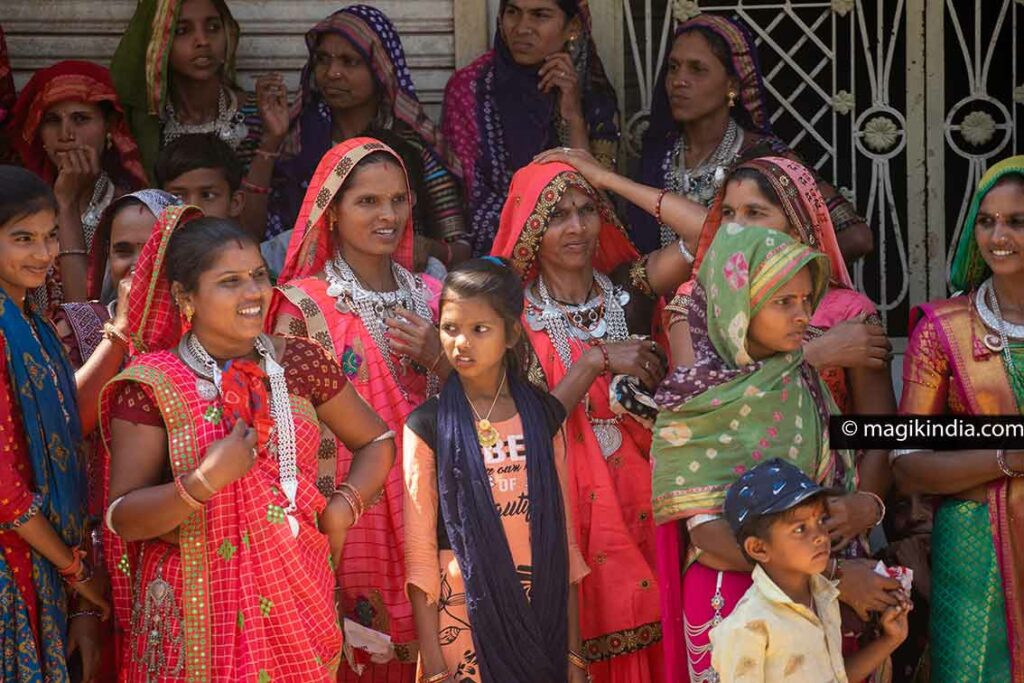
The musicians usually precede the troupes of dancers with their percussion and their flutes whose simple melodies repeat themselves in a loop… Totally hypnotizing. As I write, these tunes still run through my head.
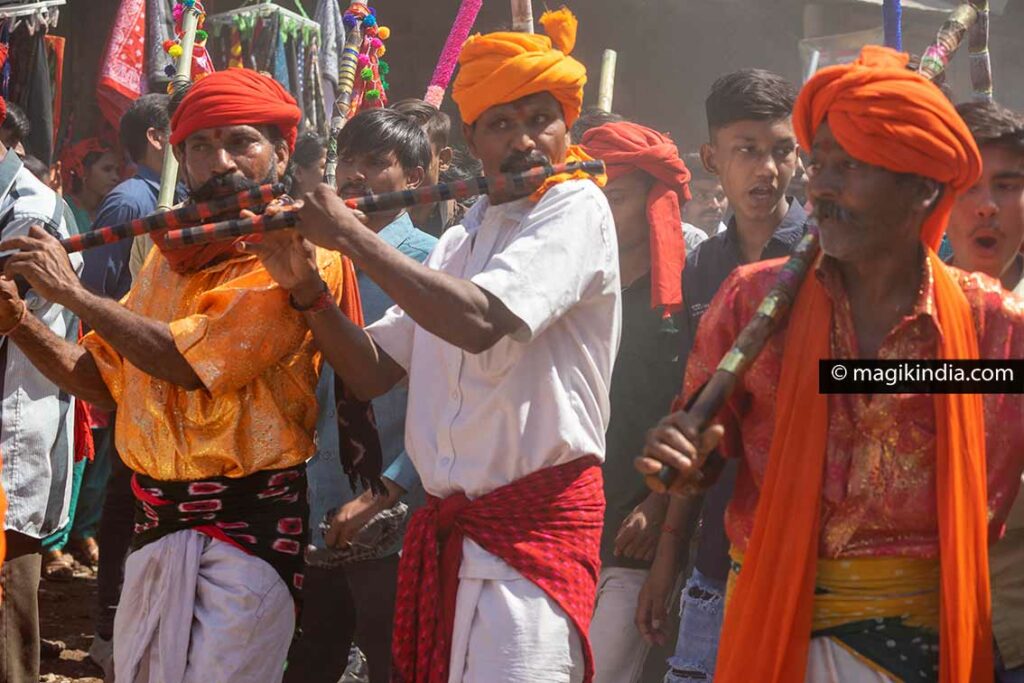
Behind the musicians, men walk or dance, sometimes in their Rathwa attire: a white loincloth with a colorful scarf tied at the waist, a safari-style bottle green shirt and a red or orange turban. Unfortunately, Western clothes are about to take over these traditional clothes!
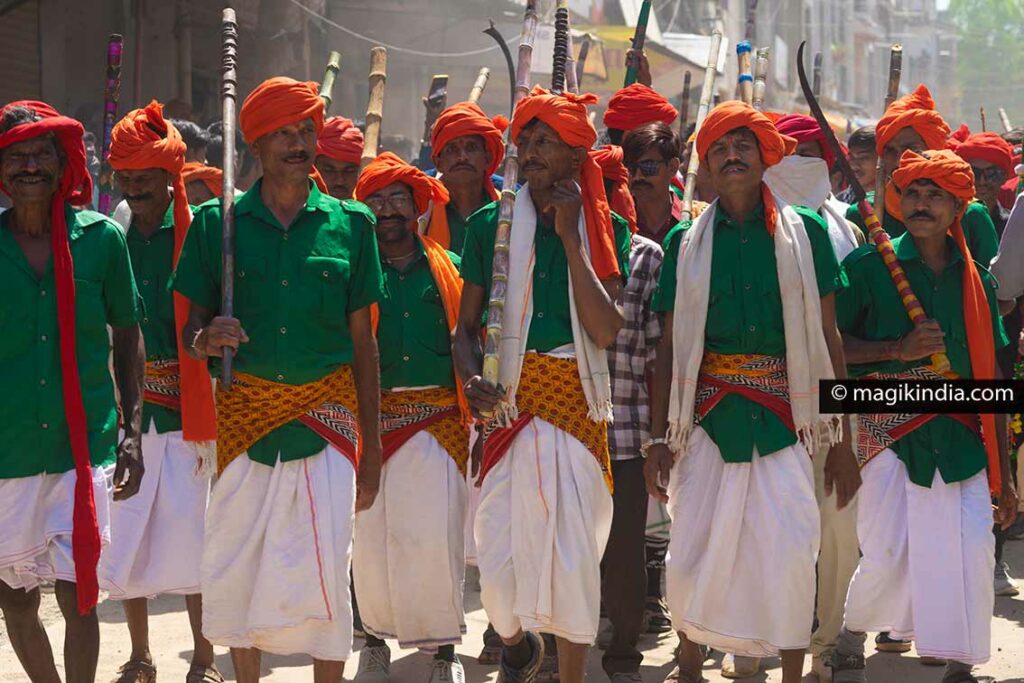
The men hold sugar canes and pruning hooks symbolizing harvests as well as a bow. Sometimes you see them brandishing swords and sticks which, according to my guide, were once used for fighting.
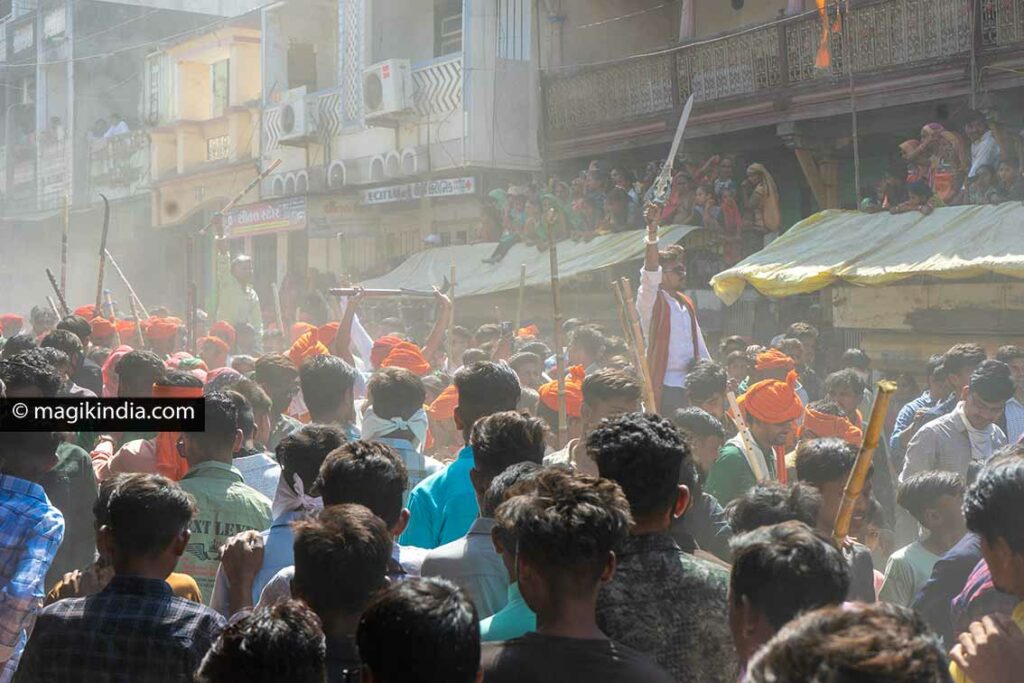
The women arrive behind in their beautiful outfits and synchronize their dance with that of the men. And, caught in the momentum, we are tempted to join them.
Like this, the troops rotate through the streets of Kavant, again and again, until sunset.
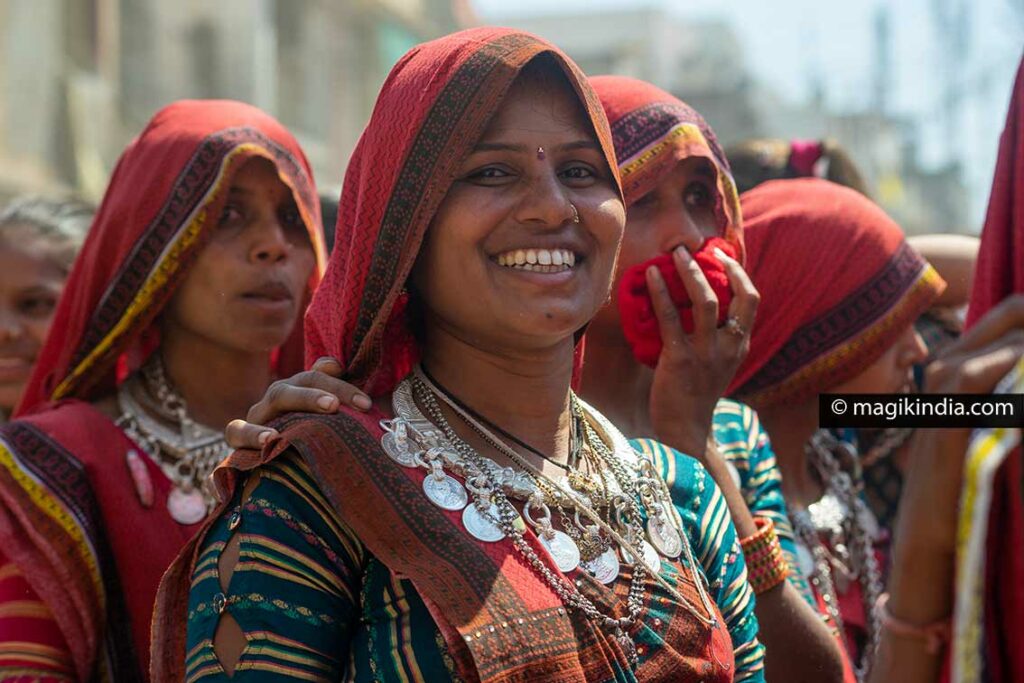
On the way back, when we no longer hoped to see them – there weren’t many of them this year – we come across another group of peacock-men… That ends this triptych of Rathwa festivals in style: Bhagoria , Holi and Kavant.
To be continued on MAGIK INDIA: the sacred paintings Pithora…
